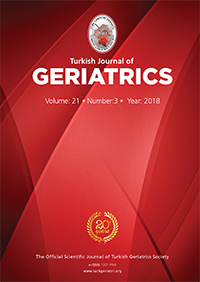2Ege University, Faculty of Medicine (Faculty Hospital), Department of Geriatrics, Ä°zmir, Turkey
3Ege University, Faculty of Medicine, Department of Biostatistics and Medical Informatics, Ä°zmir, Turkey DOI : 10.31086/tjgeri.2018344046 Introduction: There is an increased number of elderly patients in intensive care units. Decreased physiological reserve and frailty makes them more vulnerable to illnesses.
Materials and Method: Geriatric intensive care unit patients (n=1093), who had no history of malignancy and chemotherapy with hospitalised more than 3 days were examined retrospectively. Clinical and laboratory values on admission and at the final, discharge or dead, were recorded. Non traditional mortality predictors neutrophil,to,lymphocyte count (NLR) and mean platelet volume (MPV), and timely changes of these parameters were examined.
Results: Readily measurable and effective markers foreseeing outcome are vital importance. In this retrospective cohort, we showed that neutrophil-to-lymphocyte count (NLR) and mean platelet volume (MPV) are independent mortality predictors in geriatric patients. In addition timely changed NLR and MPV were also independent mortality predictors [0.41 (95% CI 0.30-0.55) p<0.001 and 0.43 (95% CI 0.31-0.59) p<0.001, respectively].
Conclusions: These easily measurable and cheap parameters can be good patient followup parameters in geriatrics patients who have increased mortality due to cardiovascular and sepsis related diseases.
Keywords : Geriatrics, Cardiovascular disease, Inflammation, Mortality
